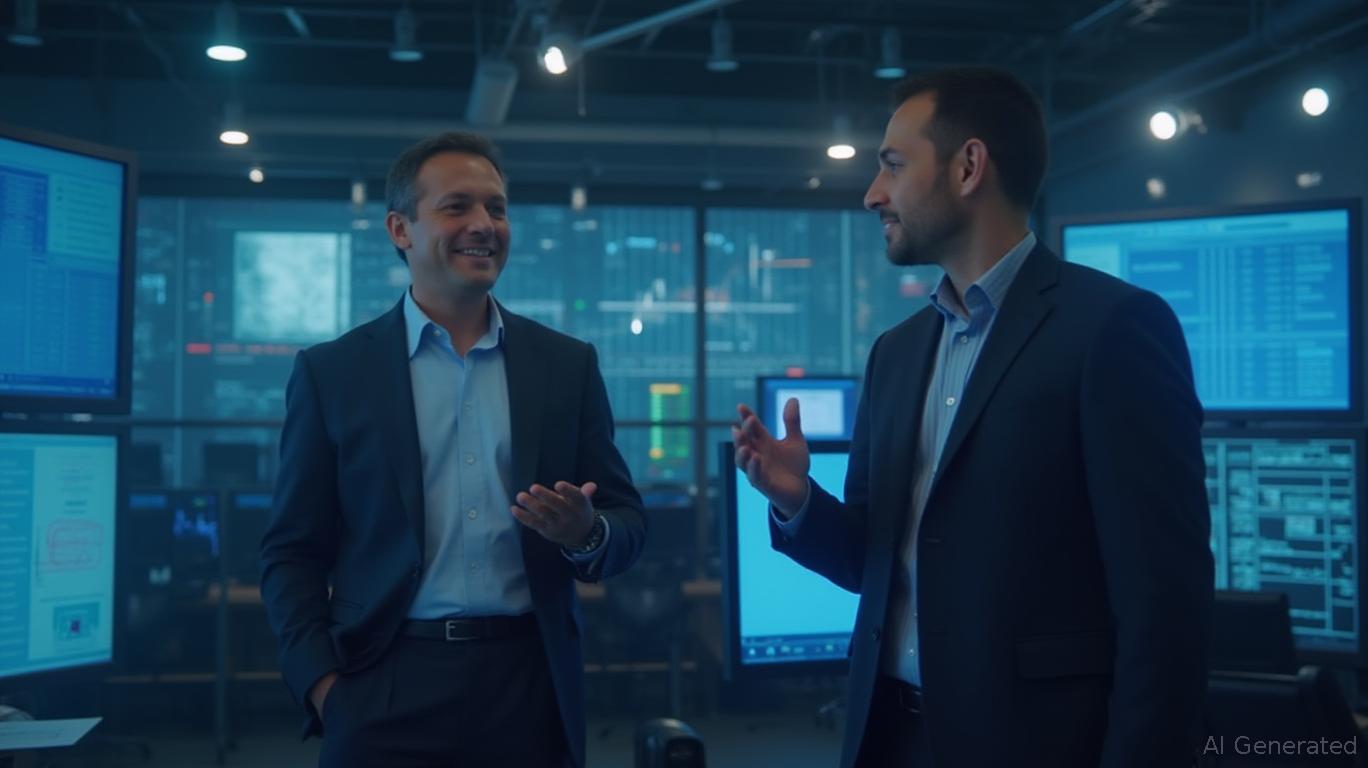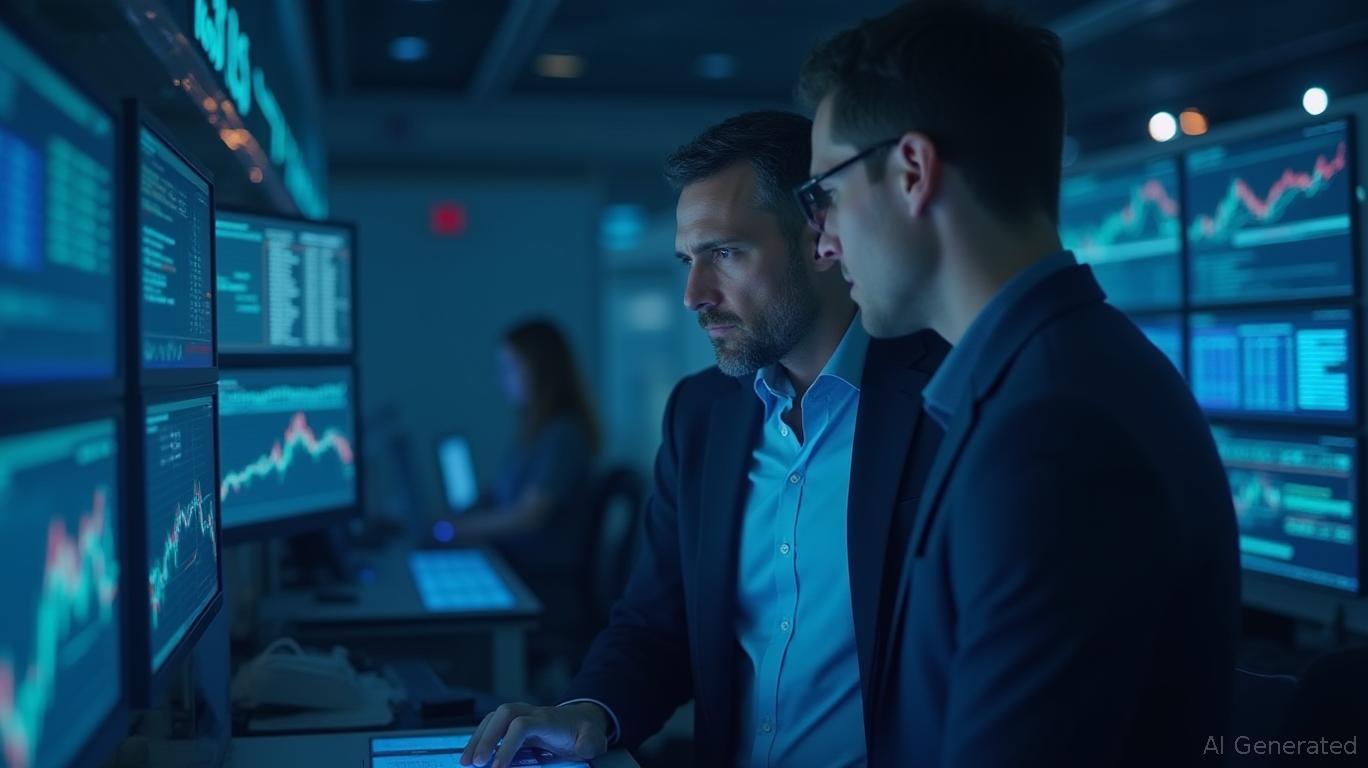Finastra and Circle Redefine Cross-Border Banking With USDC Settlement Revolution
- Finastra partners with Circle to integrate USDC into its $5T cross-border payment hub, enabling faster, cheaper, secure transfers via blockchain-based settlement. - Mastercard expands collaboration with Circle to enable first-time USDC/EURC settlement for EEMEA acquirers, bridging blockchain assets with traditional commerce infrastructure. - USDC's $61.3B circulation (up 90% YoY) and growing adoption by major financial players signal stablecoins' rising role in reshaping global payment efficiency and dig
USDC is gaining momentum in the global banking sector as Circle continues to expand its partnerships with major financial technology firms and payment networks. A significant step in this direction came with Finastra, a leading provider of financial services software, announcing a collaboration with Circle to integrate USDC into its cross-border payment infrastructure. This initiative allows banks to utilize USDC for settlement within Finastra’s Global PAYplus (GPP) payment hub, which processes over $5 trillion in daily cross-border transactions. The integration aims to reduce reliance on traditional correspondent banking networks, enabling faster, more cost-effective, and secure international transfers without compromising compliance or foreign exchange processes.
Finastra’s Chief Executive Officer, Chris Walters, emphasized that the collaboration provides banks with the tools to innovate in cross-border payments without the need to develop standalone infrastructure. By linking Finastra’s payment hub with Circle’s blockchain-based settlement system, the partnership allows financial institutions to explore new payment models while maintaining operational continuity. The move highlights the growing interest in stablecoins among global banks as alternatives to traditional settlement mechanisms.
Circle’s CEO, Jeremy Allaire, noted that Finastra’s extensive reach and expertise in powering banking infrastructure make it an ideal partner for expanding USDC settlement in cross-border flows. This partnership aligns with the broader trend of financial institutions adopting stablecoins to enhance efficiency and reduce costs. The integration of USDC into cross-border transactions is particularly significant given the token’s $61.3 billion circulation as of early August 2025, representing a 90% increase year-over-year.
In parallel, Mastercard has also deepened its collaboration with Circle to enable USDC and EURC settlement for acquirers in the Eastern Europe, Middle East, and Africa (EEMEA) region. This development marks the first time that acquirers in the EEMEA region can settle transactions using stablecoins, further reinforcing Mastercard’s role in bridging blockchain-native assets with traditional fiat commerce infrastructure. Arab Financial Services and Eazy Financial Services are among the first to benefit from this expanded effort.
Mastercard’s President for EEMEA, Dimitrios Dosis, stated that the company’s strategic focus is to integrate stablecoins into mainstream financial systems by investing in infrastructure and governance. The expanded partnership with Circle enables acquirers to settle transactions in USDC or EURC—fully-reserved stablecoins issued by regulated affiliates of Circle—which can then be used to settle with merchants. This initiative supports Mastercard’s vision of advancing tokenized and programmable money, with the goal of making stablecoins as ubiquitous as traditional payment methods.
The adoption of stablecoins by major financial players such as Mastercard and Finastra reflects the broader industry shift toward digital assets as a means of enhancing the speed, transparency, and efficiency of financial transactions. As stablecoin usage continues to grow, particularly in emerging markets, it is likely to reshape the landscape of cross-border payments and digital trade.
Source:

Disclaimer: The content of this article solely reflects the author's opinion and does not represent the platform in any capacity. This article is not intended to serve as a reference for making investment decisions.
You may also like
Ethereum News Today: Institutional Capital Shifts: Ethereum ETFs Outpace Bitcoin in Surge
- VanEck CEO Jan van Eck highlights Ethereum's rising institutional adoption, calling it the "Wall Street token" due to surging ETF inflows outpacing Bitcoin. - Ethereum ETFs attracted $1.83B in 5 days (vs. $171M for Bitcoin), with $13B cumulative inflows since mid-2024 despite price dips. - Institutional investors view Ethereum's DeFi/stablecoin utility as a strategic asset, supported by regulatory clarity from the July GENIUS Act. - Goldman Sachs leads Ethereum ETF holdings at $712M, but Bitcoin ETFs sti

Magna and SecondSwap Solve Liquidity Puzzle for Locked Tokens
- Magna International partners with SecondSwap to unlock liquidity for locked tokens via issuer-approved trading mechanisms. - The platform prioritizes regulatory compliance and institutional-grade security, eliminating unregulated liquidity pools. - This collaboration addresses a critical blockchain industry gap, potentially boosting ITO participation and institutional trust. - Magna's blockchain expansion reflects traditional finance's growing involvement in structured crypto liquidity solutions.

NVIDIA’s China Chip Stalemate Shadows Record Earnings
- NVIDIA shares fell 2.2% pre-market after Q2 FY2026 results showed $46.7B revenue (56% YoY growth), but data center revenue missed forecasts by $200M due to U.S. export restrictions halting H20 chip sales to China. - The company expanded its buyback program by $60B and declared a $0.01/share dividend, signaling confidence despite geopolitical risks and a $4B H20 sales decline from China-related restrictions. - CEO Jensen Huang emphasized the Blackwell platform as central to AI infrastructure, projecting $

Google pours $9 B into Virginia to expand AI and cloud data centers
Share link:In this post: Google is investing $9 billion in Virginia to build and expand data centers. It will also spend $1 billion on AI training programs for college students. The growth raises concerns about energy and water use in the state.
